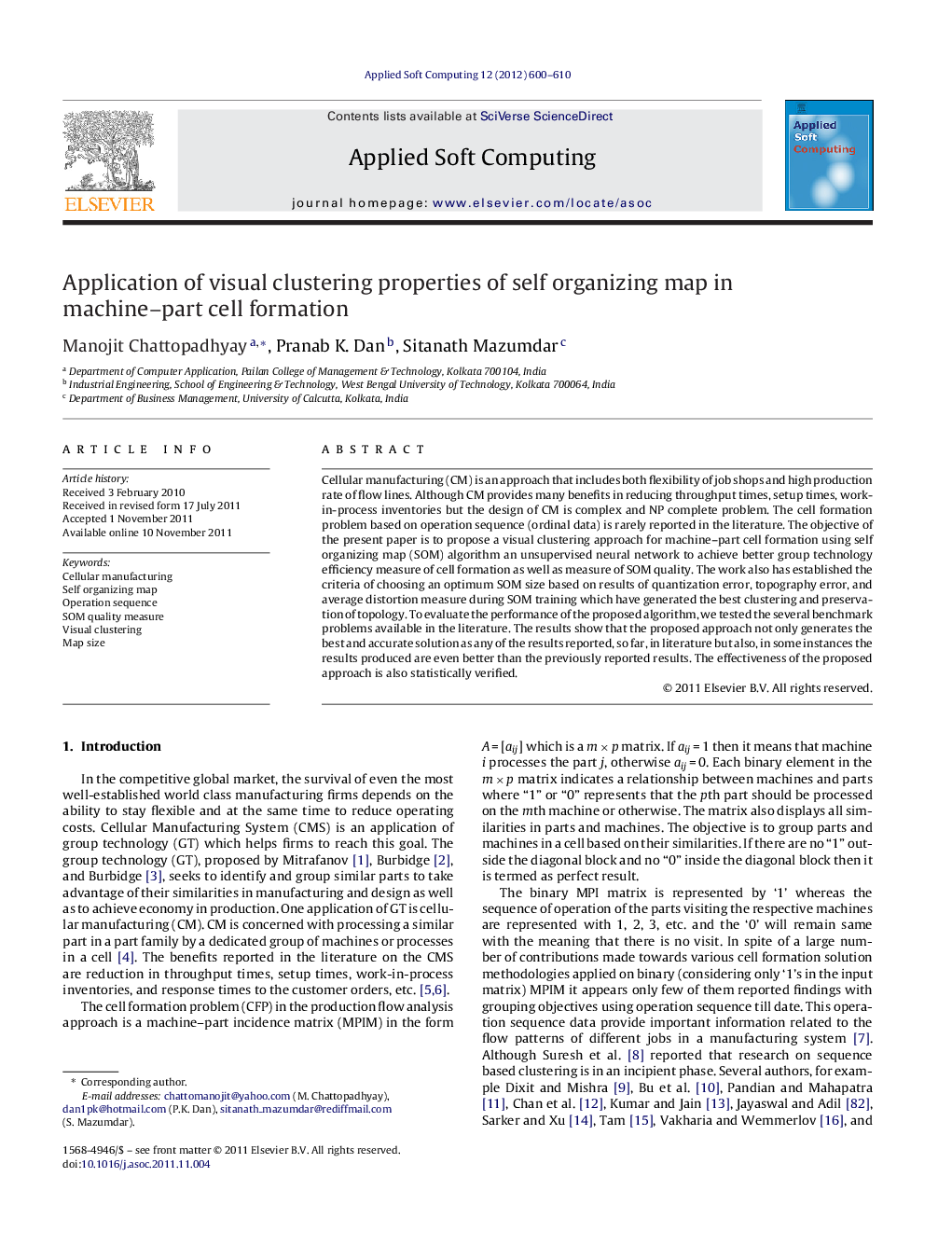| Article ID | Journal | Published Year | Pages | File Type |
|---|---|---|---|---|
| 495885 | Applied Soft Computing | 2012 | 11 Pages |
Cellular manufacturing (CM) is an approach that includes both flexibility of job shops and high production rate of flow lines. Although CM provides many benefits in reducing throughput times, setup times, work-in-process inventories but the design of CM is complex and NP complete problem. The cell formation problem based on operation sequence (ordinal data) is rarely reported in the literature. The objective of the present paper is to propose a visual clustering approach for machine–part cell formation using self organizing map (SOM) algorithm an unsupervised neural network to achieve better group technology efficiency measure of cell formation as well as measure of SOM quality. The work also has established the criteria of choosing an optimum SOM size based on results of quantization error, topography error, and average distortion measure during SOM training which have generated the best clustering and preservation of topology. To evaluate the performance of the proposed algorithm, we tested the several benchmark problems available in the literature. The results show that the proposed approach not only generates the best and accurate solution as any of the results reported, so far, in literature but also, in some instances the results produced are even better than the previously reported results. The effectiveness of the proposed approach is also statistically verified.
Graphical abstractMachine-part cell formation using visual clustering approach of Self Organizing Map (SOM) algorithm with an analysis of selection criteria of optimum SOM for best clustering and topology preservation and satisfactorily verified quality of solution of benchmarked problems.Figure optionsDownload full-size imageDownload as PowerPoint slideHighlights► Machine-part cell formation based on operation sequence is rarely reported in the literature. ► A visual clustering approach of self organizing map (SOM) algorithm has been used to achieve cell formation and to measure the quality of SOM. ► The selection criterion of optimum SOM size has been explored for best clustering and topology preservation. ► The experiment generated effective solution of several benchmarked problems from literature which was statistically verified.
